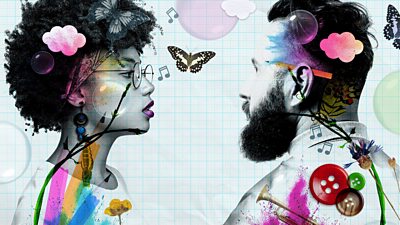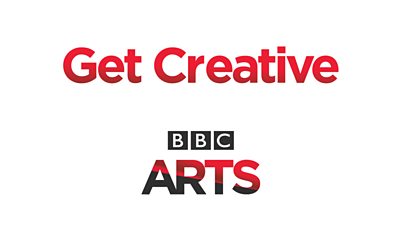Even a small amount of creativity can help you cope with modern life, reveals new research by ���˿��� Arts and UCL
Good news for those juggling time-pressures in today’s busy, modern life. According to ground breaking research commissioned by ���˿��� Arts, even the briefest time spent on a creative pastime such as painting, pottery or playing the piano, has an impact on our wellbeing and emotions.

This study is the first to show the cognitive strategies the brain uses to regulate our emotions when we’re taking part in creative activities.
In the largest study of its kind, with almost 50,000 people taking part, the ���˿��� Arts Great British Creativity Test - in partnership with UCL - explored for the first time how creative activities can help us manage our mood and boost wellbeing.
The results are being revealed today as part of the Get Creative Festival - the UK-wide celebration of have-a-go creativity from May 11-19, with more than 1,000 events on offer to the public, either for free or just a small cost.
Led by Dr Daisy Fancourt, UCL Senior Research Fellow and former ���˿��� Radio 3 New Generation Thinker, the Great British Creativity Test research shows there are three main ways we use creativity as coping mechanisms to control our emotions:
1. a distraction tool - using creativity to avoid stress
2. a contemplation tool - using creativity to give us the mind space to reassess problems in our lives and make plans
3. a means of self-development to face challenges by building up self-esteem and confidence
Trying new creative activities is particularly good for our emotions and wellbeing. The research found that getting hands-on with something new and creative is important regardless of skill level, it is the taking part that counts.
Constantly learning and trying new creative pursuits is also more beneficial, as the survey revealed that doing an activity for more than ten years, means it can become less effective at regulating negative emotions.
The findings also revealed that we get emotional benefits from even a single session of creativity and there are cumulative benefits from regular engagement. And, when we’re facing hardships in our lives, creative activities are particularly beneficial for our emotions.
Interestingly, the survey revealed that nothing beats taking part in live creative activities that involve face-to-face social interaction, for example: singing in a choir or taking part in a group painting class. However, virtual creative experiences can also help and seem to have some benefits but these are less strong and emotionally beneficial than experiences which include face-to-face interaction with others. To explore this, the team worked with composer Eric Whitacre to compare responses from the Great British Creativity Test on live group singing, with responses from participants who had taken part in a virtual choir, singing remotely from their own homes. Both groups experienced benefits for their emotions, although the strongest results came from live singing.
Dr Daisy Fancourt, says: "This study is the first to show the cognitive strategies the brain uses to regulate our emotions when we’re taking part in creative activities. While previous studies have shown the strong link between creative activities and emotions, we've not been sure about how this has been happening. It is a really exciting finding and we’ll be sharing our data with other researchers across the UK.”
Lamia Dabboussy, Editor, ���˿��� Arts, says: “We are proud to be one of the founding partners of Get Creative and are thrilled that our research adds to the wealth of evidence about the benefits of getting creative. Through the Get Creative Festival everyone has the chance to take the plunge and try something new and find a new creative hobby - with the knowledge that it’s having a great effect on your emotional health. Lots of us lead increasingly busy lives and this research shows that even a small amount of time spent on creative pursuits can really make a difference. I hope the results will give audiences the inspiration and confidence to take up a new creative hobby in 2019.”
The Great British Creativity Test findings are being used to help people identify which of the three coping mechanisms they use and this year, as part of the Get Creative Festival 2019, people will be invited to take a Feel Good Test. will give participants a ‘feel good formula’ to re-boot their creative habits - maximising the potential for each individual to improve wellbeing.
The Open University has developed a new website with the ���˿��� to run the study in partnership with UCL and give personal recommendations.
Mike Sharples, Emeritus Professor of Educational Technology at The Open University, says: “We have worked closely with the ���˿��� and UCL on developing our nQuire site to host the Feel Good Test. At the end of the Test, participants get a personalised Feel Good Formula with advice on how small changes to spare time activities could bring health benefits.”
The Get Creative Festival - now in its fourth year - shines a light on all the innovative and inspiring cultural activity across the UK; it is delivered in partnership with 64 Million Artists, Arts Council England, Arts Council of Northern Ireland, Arts Council of Wales, the ���˿���, Crafts Council, Creative People and Places, Creative Scotland, Family Arts Campaign, Local Government Association, Libraries Connected, Scottish Library & Information Council, Voluntary Arts and What Next?
This unique test will launch in early May 2019 ahead of this year’s Get Creative Festival from 11-19 May.
EF/AM2
About the research
- The Great British Creativity Test tested the link between creativity and wellbeing and was conducted by Dr Daisy Fancourt commissioned by ���˿��� Arts and ���˿��� Learning.
- The research was conducted between March and May 2018, amongst a sample of 47,924 people throughout Britain.
- Full details of The Great British Creativity Test research is available at:
- Participants took part in the online survey across March to May 2018. The survey took approximately 20 minutes to complete and asked participants a range of demographic questions alongside questions on participation in 16 types of creative activities: performing arts (singing, dancing, playing a musical instrument; rehearsing or performing in a play/drama/opera; learning or practising magic tricks or circus skills), visual arts, design and craft (painting, drawing, printmaking, sculpture; pottery, calligraphy or jewellery making; textile crafts e.g. embroidery, crocheting or knitting; wood crafts such as carving or furniture making), literature-related (reading a novel, stories, poetry or plays for pleasure; creative writing; and composing music), and online, digital and electronic arts (creating artworks or animations on a computer; making films or videos; photography). The survey also asked participants to report whether they used 31 different types of emotion regulation strategies when engaging in these creative activities, including acceptance, concentration, discharge, distraction, perceived sense of self, problem solving, reappraisal, reflection, rumination and suppression.
